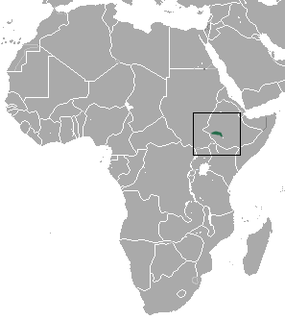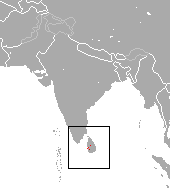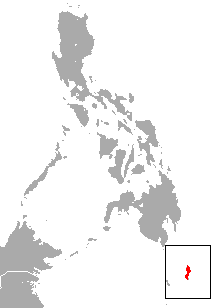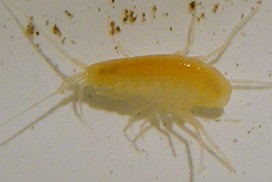
A heath is a shrubland habitat found mainly on free-draining infertile, acidic soils and characterised by open, low-growing woody vegetation. Moorland is generally related to high-ground heaths with—especially in Great Britain—a cooler and damper climate.

The Endangered Species Act of 1973 is the primary law in the United States for protecting imperiled species. Designed to protect critically imperiled species from extinction as a "consequence of economic growth and development untempered by adequate concern and conservation", the ESA was signed into law by President Richard Nixon on December 28, 1973. The U.S. Supreme Court called it “the most comprehensive legislation for the preservation of endangered species enacted by any nation". The purposes of the ESA are two-fold: to prevent extinction and to recover species to the point where the law's protections are not needed. It therefore “protect[s] species and the ecosystems upon which they depend" through different mechanisms. For example, section 4 requires the agencies overseeing the Act to designate imperiled species as threatened or endangered. Section 9 prohibits unlawful ‘take,’ of such species, which means to “harass, harm, hunt...” Section 7 directs federal agencies to use their authorities to help conserve listed species. The Act also serves as the enacting legislation to carry out the provisions outlined in The Convention on International Trade in Endangered Species of Wild Fauna and Flora (CITES). The Supreme Court found that "the plain intent of Congress in enacting" the ESA "was to halt and reverse the trend toward species extinction, whatever the cost." The Act is administered by two federal agencies, the United States Fish and Wildlife Service (FWS) and the National Marine Fisheries Service (NMFS). FWS and NMFS have been delegated the authority to promulgate rules in the Code of Federal Regulations to implement the provisions of the Act.

Bailey's shrew is a species of mammal in the family Soricidae. The name honours American naturalist and museum director Alfred Marshall Bailey.

The Mindanao shrew is a species of mammal in the family Soricidae. It is endemic to the Philippines. Its natural habitat is subtropical or tropical dry forests. It is threatened by habitat loss.

The Bale shrew is a species of mammal in the family Soricidae.

The Glass's shrew is a species of mammal in the family Soricidae. It is endemic to Ethiopia. The mammal's natural habitats are subtropical or tropical high-altitude shrubland, subtropical or tropical high-altitude grassland, and swamps. It is threatened by habitat loss.

The Luzon shrew is a species of mammal in the family Soricidae. It is endemic to the Philippines. It is threatened by habitat loss.

MacMillan's shrew is a species of mammal in the family Soricidae.

Kelaart's long-clawed shrew is a species of mammal in the family Soricidae. It is monotypic within the genus Feroculus. It is endemic to Sri Lanka and southern India. Its natural habitats are subtropical or tropical dry forests, subtropical or tropical dry lowland grassland, and swamps. It is threatened by habitat loss. It is known as පිරි හික් මීයා in Sinhala.

The Bornean pygmy shrew is a species of shrew in the family Soricidae. It was named for zoologist Charles Hose.

The Asian highland shrew is a species of mammal in the family Soricidae. It is found in India and Sri Lanka. Its habitat is subtropical or tropical dry forests. It is threatened by habitat loss. It is known as ශ්රී ලංකා කදු හික් මීයා in Sinhala.

The jungle shrew is a species of mammal in the family Soricidae endemic to Sri Lanka. Its natural habitat is subtropical or tropical dry forests. It is threatened by habitat loss.

The Talaud flying fox or Talaud fruit bat is a species of bat in the family Pteropodidae. It is endemic to the islands of Salebabu and Karekaleng in the Talaud Archipelago of Indonesia. Its natural habitat is subtropical or tropical swamps.

The Philippine gray flying fox is a species of flying fox in the family Pteropodidae. It is found in Indonesia and the Philippines. Its natural habitat is subtropical or tropical dry forests. It is threatened by habitat loss.
Glyphyalinia pecki is a species of air-breathing land snails, terrestrial pulmonate gastropod mollusks in the family Zonitidae. This species is endemic to the United States.
Cambarus pecki, sometimes called the phantom cave crayfish, is a species of crayfish in the family Cambaridae. It is endemic to Alabama where it is found in three unconnected caves in the Tennessee River drainage in Colbert County, Lauderdale County, and Morgan County.

Stygobromus is a genus of amphipod crustaceans that live in subterranean habitats. As well as a large number of species in North America, a smaller number of species are also known from Eurasia. Most of the North American species live in areas which were not covered by the Laurentide Ice Sheet, although a few species seem to have survived under the ice. A number of species are on the IUCN Red List as endangered species (EN) or vulnerable species (VU); all the listed species are endemic to the United States. One species, S. lucifugus, is extinct. Stygobromus includes the following species:

Stygobromus pecki is a rare species of crustacean known by the common name Peck's cave amphipod. It is endemic to Texas in the United States, where lives in only two springs in Comal County. It is a federally listed endangered species of the United States, and is listed as Endangered on the IUCN Red List.
Disparithelphusa pecki is a species of freshwater crab in the family Pseudothelphusidae, and the only species in the genus Disparithelphusa.
















